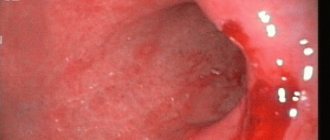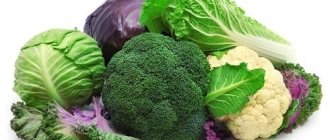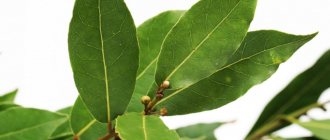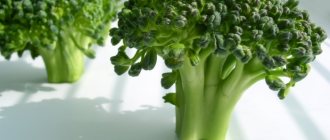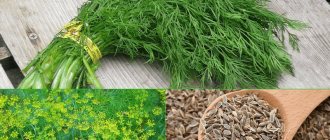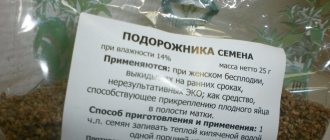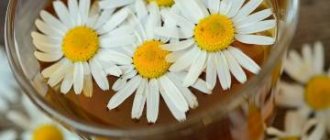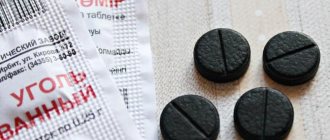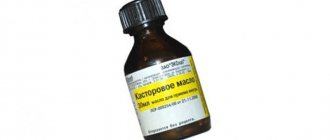Congestion in the mammary gland often accompanies the process of lactation. To prevent a slight retention of milk in the mammary glands from leading to the development of mastitis, a nursing mother should take timely measures to eliminate lactostasis.
The best solution is to contact a medical specialist, but there is not always time or opportunity for this. You can give yourself first aid at home. The beneficial properties of cabbage leaves allow it to be used to improve the flow of breast milk.
Condition Characteristics
If the normal outflow of milk is preserved in the mammary glands, then the lactation process proceeds comfortably and without complications. Very often, the ducts of the mammary gland become narrowed or blocked, resulting in the outflow of milk being disrupted. A condition called lactostasis occurs.
Congestion can be recognized by the following symptoms:
- a feeling of tingling, burning and fullness in one or both mammary glands;
- redness of the area of the skin located in the area of blockage of the mammary gland duct;
- the presence of lumps and nodules in the chest;
- pain at rest and when pressing on the gland.
If measures are not taken in a timely manner, lactostasis risks developing into a purulent-inflammatory process (mastitis) or mastopathy of varying severity.
Prevention of lactostasis
You can prevent the development of congestion in the mammary glands using the following recommendations:
- protect the mammary glands from overheating and hypothermia, avoid drafts;
- feed a newborn baby on demand, and not according to an hourly schedule;
- beware of traumatic injuries to the mammary glands;
- use bras for nursing mothers;
- After feeding the baby, you should express the remaining breast milk;
- Each breastfeeding is recommended to be done in different positions that are comfortable for mother and child.
The anatomical features of the structure of the mammary gland ducts cause disruption of the outflow of mother's milk. It can be difficult for a nursing mother to cope with this problem on her own, so she will need to consult a medical specialist.
An important point in the prevention of lactostasis is compliance with the rules of caring for the mammary glands. When swimming, the water should not be too hot or cold. After taking a shower, the mammary glands should be wiped dry, lubricated with baby cream and put on a comfortable bra.
If cracks and abrasions have been noticed in the nipple area, then special wound-healing ointments and creams (Bepanten, Solcoseryl) will help solve this problem.
Beneficial properties of cabbage leaves
Fresh leaves of white cabbage are an effective treatment for lactostasis and cracks in the nipple area. Using the juice of fresh white cabbage leaves, you can prevent the development of benign neoplasms in the mammary glands and mastopathy.
When the first signs of stagnation of breast milk are detected, it is recommended to use fresh cabbage leaves in the form of compresses.
Cabbage leaf juice contains useful components such as:
- lysozyme;
- choline;
- complex of vitamins (U, B1, P, K, A, B6, C);
- vegetable fiber;
- phytoncides;
- trace elements (phosphorus, calcium, sulfur).
Lysozyme and phytoncides have bactericidal properties and prevent pathogenic microflora from entering the mammary glands. Vitamin A promotes rapid healing of existing abrasions and cracks in the skin of the nipples.
Recommendations for using cabbage to treat mastopathy
It is recommended to use the middle leaves of the cabbage, as the upper leaves contain less vitamins and moisture
Folk remedies with proven effectiveness are the best option for emergency care in case of a sharp deterioration in health, if an immediate visit to a specialist has to be postponed. This fully applies to cabbage, the leaves of which are widely used to treat diseases of the mammary glands. The only condition is the correct application of the green “medicine”, due to which its usefulness for the body increases.
Before applying cabbage leaf for mastopathy, it must be correctly selected and prepared for the compress. It is best to use the middle leaves of the head of cabbage, because... the upper ones contain less nutrients and moisture. From each sheet, cut off the seal in the center and slightly cut the top layer to form a “mesh”, without cutting through the entire thickness of the sheet. This will allow the cabbage to release more juice, rich in vitamins and beneficial microelements. It will be possible to enhance the process of juice secretion by lightly beating each leaf. The sheets are then placed on the glands so that they completely cover the breasts and secured with a bra. During treatment, you should avoid wearing tight underwear, which can negatively affect the development of the tumor.
Ways to use cabbage leaf
Topical use of cabbage leaves will not cause any difficulties, since to obtain the desired result it is enough to apply fresh cabbage leaves to the area of the mammary glands.
The most common recipes for the treatment of lactostasis include:
- A clean leaf of white cabbage must be mashed until juice forms. This can be done using a kitchen hammer, rolling pin or your hands. The resulting sheet is applied to the mammary gland in the area of stagnation. This compress should be changed every 2.5-3 hours.
- Pre-washed cabbage leaves are applied to the entire surface of the mammary glands. The sheets are fixed with a clean cloth or bandages. It is recommended to apply such compresses before bedtime.
- A clean cabbage leaf is greased with a mixture of table salt and butter. The compress is applied to the mammary glands and left for 30-40 minutes.
- The cabbage leaf is smeared with natural honey and applied to the seal areas. Cling film and woolen cloth are placed on top of the compress. It is recommended to keep such a compress for 2-3 hours, after which the mammary glands should be washed with warm water and wiped dry.
- To relieve swelling and pain due to lactostasis, it is recommended to mince 2-3 medium cabbage leaves and add 3 tsp to this pulp. curdled milk or kefir. The resulting mixture is spread on a gauze napkin and applied to the mammary glands. A plastic film and thick fabric are placed on top of the gauze. Keep the compress for 1.5-2 hours.
It is important to remember that this remedy is effective only in the initial stage of lactostasis. If a woman has developed mastitis, she is not recommended to self-medicate.
Constant medical supervision and monitoring the effectiveness of treatment is the key to successful treatment of lactostasis.
Popular recipes
Warm honey is applied in a thin layer to cabbage leaves and applied to the chest.
The year-round sale and low price of white cabbage make this “medicine” accessible to all patients without exception. Its use simultaneously with the main therapy increases the effectiveness of the course and allows you to quickly get rid of the unpleasant symptoms of the disease.
Several proven recipes for the treatment of benign tumors that use cabbage leaves:
- Universal compresses. Preparation of the sheets consists of treating them with boiling water and thoroughly beating them over the entire surface to intensively release the juice. The leaves are placed on the chest and secured with a clean cloth.
- Cabbage leaf with honey for mastopathy.
This option is recommended for patients who are not allergic to honey. To enhance the therapeutic effect, the product is slightly warmed up and a thin layer is applied to cabbage leaves, which are then used as a compress on the chest. You can keep it on all night, because... The effectiveness of the treatment depends on the time of exposure. Melted butter is also used for cabbage compresses. - Cabbage leaves with kefir. A distinctive feature of the recipe is the use of chopped cabbage leaves. The resulting slurry from pieces of cabbage and the secreted juice is mixed with kefir, applied to a cloth and placed on the chest. Exposure time is at least 8 hours, course duration is a week.
- Cabbage with butter. Melt butter is applied in a thin layer to the surface of the cabbage leaf. A good effect is achieved by using salt, which promotes intense juice secretion. To enhance the therapeutic effect, a warm wrap is made on top of the leaf compress.
- Beets, cabbage and honey. Chopped beets are mixed with a small amount of heated honey, after which the resulting mixture is applied to a cabbage leaf. This compress can be done for two or three weeks.
The duration of treatment with yogurt and cabbage leaves is 20 days
The beneficial properties of most vegetables and spices open up unlimited possibilities for their use for the treatment of benign breast tumors. Their cost is usually low, and their widespread distribution allows you to purchase the required set of products in any store.
- Tin with mint seeds. Used as a tincture, infused for two to three hours. To use as a compress, cabbage juice and flour are added to it to obtain the consistency of an elastic dough. The finished product is applied in a layer to the inside of the cabbage leaf and fixed on the chest, after which it is kept for a couple of hours. The treatment course is usually 20 procedures.
- Curdled milk.
The heated product is applied to a cabbage leaf, which is then used as a compress. The duration of such a course can be up to 20 days. Treatment of chickens with compresses of yolk, honey and cabbage juice can last up to 3 weeks - Strawberry leaves. After thoroughly grinding, the finished gruel is applied to a cabbage leaf, which is then applied to the chest. It is advisable to do the procedure at night.
- Barley malt. A viscous mixture of the product and flour is applied to previously prepared cabbage leaves. Holding time is about 2 hours. If the patient feels burning and itching on the skin, the compress can be removed earlier.
- Chicken egg yolk. A mixture of yolk, honey and cabbage juice is applied to the leaf, which is then used as a compress. The course of treatment can last up to three weeks. Its effectiveness is confirmed by numerous positive recommendations from patients.
According to reviews, after the first sessions of treatment with cabbage for mastopathy, most women note an improvement in their general condition and a reduced severity of the classic symptoms of mastopathy. Provided you complete the course in full, its therapeutic effect will not take long to arrive. Cabbage is considered a hypoallergenic drug; its use does not cause harm to health.
https://youtu.be/voB8lzvVJwg
Mastopathy is a benign pathology of the mammary glands, which is very often diagnosed in women of any age.
The peak incidence occurs between the ages of 35 and 45 years.
Treatment of the pathology is mainly hormonal, but in some cases surgical intervention is required.
Quite often, traditional medicine is used to treat mastopathy; the most common are recipes that are based on the use of white cabbage leaves.
Traditional medicine has a positive effect on the human body.
For mastopathy, they eliminate pain, swelling and other discomfort.
We suggest you familiarize yourself with a burst callus on your foot - what to do, what to treat and what to anoint the burst callus for quick healing
However, they do not affect the cause of the disease, therefore, they cannot be used as the main treatment.
The essence of pathology
Mastopathy is a pathological proliferation of tissues, which is observed when the ratio of epithelial and connective tissue is disturbed.
This phenomenon occurs when neurohumoral regulation in the body is disrupted.
This means that mastopathy can develop both when there is a failure in the balance of hormones and when the functioning of the nervous system is disrupted.
Most often, mastopathy develops with an excess of estrogen and a lack of progesterone, but sometimes the disease occurs with an excess of prolactin, a hormone produced by the pituitary gland.
When there is a hormonal imbalance, breast cells begin to divide excessively, which ultimately leads to the formation of lumps and tumors in the mammary gland.
White cabbage leaves have a positive effect on the processes that occur in the tissues of the mammary gland.
This vegetable contains a large number of important elements that have anti-inflammatory, analgesic and antitumor effects.
In addition, these elements support a woman’s immunity, which allows the body to more actively fight the disease.
Cabbage leaves contain:
- Indoles. These substances regulate hormonal levels, which leads to neutralization of the negative effects of estrogens on tissues.
- Vitamins A and C, which prevent the transformation of benign pathology into malignant one.
- Methionine - doctors call it an “antitumor vitamin”; in fact, it is an amino acid that deactivates toxic substances formed in the mammary gland as a result of pathological processes.
- Phytoncides. These substances reduce swelling of the gland, improve blood circulation and promote skin regeneration.
- Polysaccharides. They have a positive effect on cell walls, strengthen them and maintain optimal water balance.
The unique set of beneficial substances contained in cabbage leaves is optimal for complementing the main therapy of mastopathy.
By correctly combining drug treatment and the use of cabbage leaves, you can achieve the following effects:
- antitumor;
- anti-inflammatory;
- immunostimulating;
- hormone-regulating;
- antioxidant;
- antitoxic.
In folk medicine there are a lot of different recipes for using cabbage leaves in the treatment of mastopathy. Indeed, cabbage for mastopathy has a multifaceted effect on a woman’s body.
It helps to relieve all the unpleasant clinical signs that accompany the disease, and can also significantly reduce the risk of developing cancer.
However, we must not forget that the treatment of mastopathy must be approached comprehensively, and traditional medicine can be used only after a detailed examination by a mammologist. Otherwise, you can worsen the condition of the mammary glands and provoke undesirable consequences.
Cabbage leaf for mastopathy can be used for all forms of the disease, as it has a beneficial effect on gland tissue and relieves negative symptoms.
Nodular mastopathy generally responds very poorly to conservative methods, and most often it is eliminated surgically.
The largest concentration of nutrients is concentrated in the stalk of the vegetable - in its core.
If a vegetable grows in unfavorable environmental conditions, the stalk accumulates toxic substances and heavy metals along with useful substances.
Cabbage leaves are used to treat mastopathy; they also contain a lot of useful substances, vitamins and minerals.
You can also use cabbage juice to prepare various lotions, compresses and other medicines from it.
It is recommended to use cabbage leaf for mastopathy only in the initial stages of changes in the mammary gland, as well as in diffuse forms of the disease.
Indications:
- Since the use of traditional medicine in these cases can provoke progression of the disease.
Cabbage juice is a liquid with unique medicinal properties.
Therefore, in the treatment of mastopathy, both the juice and the leaf itself are used, which are first washed well, large veins are cut off from it and lightly kneaded to release the juice.
Then the sheet is applied to the mammary gland in places of compaction.
Popular recipes:
- Recipe No. 1. 3-4 large cabbage leaves must be passed through a meat grinder and the juice squeezed out of the resulting pulp. The juice is taken orally. 1 glass is drunk in three doses throughout the day.
- Recipe No. 2. A couple of medium cabbage leaves are washed and beaten with a fist or hammer. After the leaf has released the maximum amount of juice, it is applied to the mammary gland and secured with a gauze bandage. This compress needs to be changed several times a day.
- Recipe No. 3. One cabbage leaf is passed through a meat grinder, then the pulp is spread on a whole leaf and applied to the chest for 5 hours.
- Recipe No. 4. A well-washed cabbage leaf is brushed with melted butter and sprinkled with a pinch of salt. The compress is applied to the mammary gland at night.
- Recipe No. 5. A cabbage leaf is smeared with honey and applied to the mammary gland overnight. It is very important to be sure that honey is not an individual allergen.
- Recipe No. 6. Finely grated raw beets mixed with honey are placed on a cabbage leaf. It is better to do the compress at night.
- Recipe No. 7. Cabbage leaves are passed through a meat grinder or crushed in a blender. The gruel is added to kefir, left for half an hour, then tampons are soaked in the product, applied to the chest and wrapped in gauze. The compress needs to be changed every 3 hours.
- Recipe No. 8. Grind cumin and mint seeds in a coffee grinder. Pour boiling water over the resulting powder and leave for 10 minutes. Then add rye flour to make a semi-liquid dough. Beat off the cabbage leaf, apply the flour mixture and apply to the chest for 3 hours.
https://youtu.be/BgKrr6p02nE
